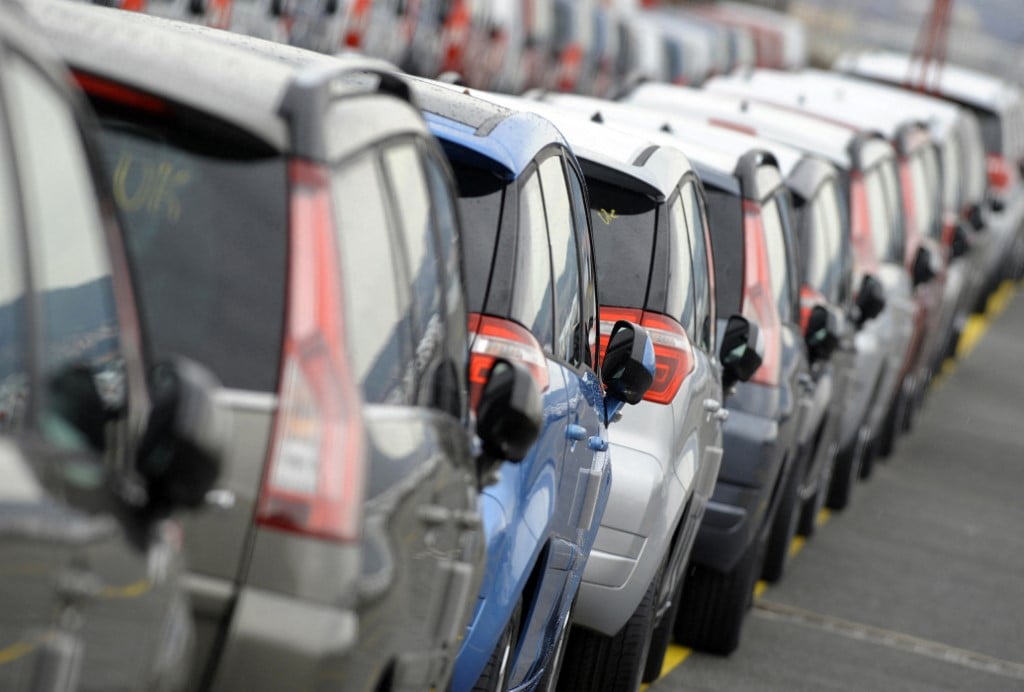Buying a car in Spain in 2021: Five crucial points to consider

If you're thinking of getting a car in Spain this year but you're unsure about whether the coronavirus crisis has made it a good or bad time to buy, here's what you need to know.
Sales have plummeted but prices haven’t
You guessed it, Covid-19 has had a huge impact on Spain’s automotive industry.
The sector has just recorded the worst month of January in terms of car sales since 1986, with a drop of 51 percent compared to the previous year (41,996).
While this is bad news overall for the Spanish economy, the first thing that might spring to mind for the individual buyer is that this could result in a drop in prices or more room for negotiation.
Unfortunately, this doesn’t seem to be the case for those looking to buy a brand-new car in Spain, with industry analysts saying prices for new cars in February 2021 are the highest in the last semester.
That doesn’t necessarily mean that all car retailers are keeping prices high, as the coronavirus crisis and restrictions on mobility during 2020 have meant that demand remains lower and that in most cases there’s a build-up of cars in stock which they want to get rid of (leading to more offers on certain models rather than an overall drop in prices).
But there are other factors at play that are influencing prices, especially for new vehicles running on fuel.
Spain’s car renewal subsidies have stopped
As Spain was emerging from its national lockdown last June, the government launched a scheme aimed at helping the country’s ailing automotive industry, its flagship campaign being the Plan Renove (Renewal Plan).
In theory the scheme offered €1.5 billion in subsidies (from €400 to €4,000 per buyer) for anyone trading in an older vehicle for new low-emission vehicles.
Unfortunately, most of the vehicles being subsidised had an emission index of up to 120gr of C02/km, whereas the EU sets the limit at 95.
Spain’s Industry and Commerce finally decided in December that it would not continue with the subsidy offer into 2021 and pulled out with €212 million in funds that hadn’t been allocated to car owners.
This isn’t good news for those looking to trade in their old banger for a new less polluting vehicle in 2021, but the government is now refocusing its renewal campaign on just electric vehicles, with €800 million (up to €7,000 per driver) in grants given to drivers who switch to electric as part of Plan MOVES III.

New taxes are also making cars more expensive
The EU-approved WLTP emission standards that Spain has to abide by will see the Impuesto de Matriculación (Registration Tax) apply to vehicles that emit more than 120gr of C02/km.
For example, a vehicle that costs €10,000 before taxes will cost €475 (4.75 percent) more if it emits more than that. From 160 to 200gr C02/km, the matriculación tax is 9.75 percent and for vehicles polluting more than 200gr C02/km the rate is 14.75 percent.
Around half of all cars in the market in Spain, mostly diesel and petrol vehicles, fall into that 4.75 percent tax bracket. On average buying a new car in Spain will cost €1,000 more than previously.
Buying a second-hand car could be best option in 2021
Spanish automotive industry analysts Motor16 have reported that in 2021 the best option for budding vehicle buyers is to opt for a used car.
The second-hand car market hasn’t suffered as much as that of new vehicles as demand has been influenced more by the individual decision of the seller rather than taxes and international emission regulations.
European valuation company DAT has forecast that prices for second-hand vehicles in Spain will drop slightly in 2021, likening the situation to the 2008 financial crisis in which Spanish drivers opted for cheaper and smaller cars.
More electric cars and hybrids available
Spain is behind most of its EU counterparts in terms electric vehicle and hybrid sales but industry experts believe the government’s MOVES subsidies and the WLTP emission regulations will mean the range of vehicles in these categories will rise considerably in 2021.
In January 2021, sales for these zero or low emission cars surpassed those of diesel models for the first time in Spanish history.
It’s worth noting that the average cost of a second-hand electric car in Spain is €26,340, according to coches.net, with the cheapest regions to get a good deal being Navarre, La Rioja and the Basque Country and the most expensive the Canary Islands, Valencia and Catalonia.
Will the national government’s MOVES subsidy plan be enough to convince drivers in Spain to buy an electric model?
Madrid has just made €110 million available to help residents buy an electric vehicle so it’s worth checking if your region offers subsidies if you are indeed interested in buying one.
Comments
See Also
Sales have plummeted but prices haven’t
You guessed it, Covid-19 has had a huge impact on Spain’s automotive industry.
The sector has just recorded the worst month of January in terms of car sales since 1986, with a drop of 51 percent compared to the previous year (41,996).
While this is bad news overall for the Spanish economy, the first thing that might spring to mind for the individual buyer is that this could result in a drop in prices or more room for negotiation.
Unfortunately, this doesn’t seem to be the case for those looking to buy a brand-new car in Spain, with industry analysts saying prices for new cars in February 2021 are the highest in the last semester.
That doesn’t necessarily mean that all car retailers are keeping prices high, as the coronavirus crisis and restrictions on mobility during 2020 have meant that demand remains lower and that in most cases there’s a build-up of cars in stock which they want to get rid of (leading to more offers on certain models rather than an overall drop in prices).
But there are other factors at play that are influencing prices, especially for new vehicles running on fuel.
Spain’s car renewal subsidies have stopped
As Spain was emerging from its national lockdown last June, the government launched a scheme aimed at helping the country’s ailing automotive industry, its flagship campaign being the Plan Renove (Renewal Plan).
In theory the scheme offered €1.5 billion in subsidies (from €400 to €4,000 per buyer) for anyone trading in an older vehicle for new low-emission vehicles.
Unfortunately, most of the vehicles being subsidised had an emission index of up to 120gr of C02/km, whereas the EU sets the limit at 95.
Spain’s Industry and Commerce finally decided in December that it would not continue with the subsidy offer into 2021 and pulled out with €212 million in funds that hadn’t been allocated to car owners.
This isn’t good news for those looking to trade in their old banger for a new less polluting vehicle in 2021, but the government is now refocusing its renewal campaign on just electric vehicles, with €800 million (up to €7,000 per driver) in grants given to drivers who switch to electric as part of Plan MOVES III.

New taxes are also making cars more expensive
The EU-approved WLTP emission standards that Spain has to abide by will see the Impuesto de Matriculación (Registration Tax) apply to vehicles that emit more than 120gr of C02/km.
For example, a vehicle that costs €10,000 before taxes will cost €475 (4.75 percent) more if it emits more than that. From 160 to 200gr C02/km, the matriculación tax is 9.75 percent and for vehicles polluting more than 200gr C02/km the rate is 14.75 percent.
Around half of all cars in the market in Spain, mostly diesel and petrol vehicles, fall into that 4.75 percent tax bracket. On average buying a new car in Spain will cost €1,000 more than previously.
Buying a second-hand car could be best option in 2021
Spanish automotive industry analysts Motor16 have reported that in 2021 the best option for budding vehicle buyers is to opt for a used car.
The second-hand car market hasn’t suffered as much as that of new vehicles as demand has been influenced more by the individual decision of the seller rather than taxes and international emission regulations.
European valuation company DAT has forecast that prices for second-hand vehicles in Spain will drop slightly in 2021, likening the situation to the 2008 financial crisis in which Spanish drivers opted for cheaper and smaller cars.
More electric cars and hybrids available
Spain is behind most of its EU counterparts in terms electric vehicle and hybrid sales but industry experts believe the government’s MOVES subsidies and the WLTP emission regulations will mean the range of vehicles in these categories will rise considerably in 2021.
In January 2021, sales for these zero or low emission cars surpassed those of diesel models for the first time in Spanish history.
It’s worth noting that the average cost of a second-hand electric car in Spain is €26,340, according to coches.net, with the cheapest regions to get a good deal being Navarre, La Rioja and the Basque Country and the most expensive the Canary Islands, Valencia and Catalonia.
Will the national government’s MOVES subsidy plan be enough to convince drivers in Spain to buy an electric model?
Madrid has just made €110 million available to help residents buy an electric vehicle so it’s worth checking if your region offers subsidies if you are indeed interested in buying one.
Join the conversation in our comments section below. Share your own views and experience and if you have a question or suggestion for our journalists then email us at [email protected].
Please keep comments civil, constructive and on topic – and make sure to read our terms of use before getting involved.
Please log in here to leave a comment.